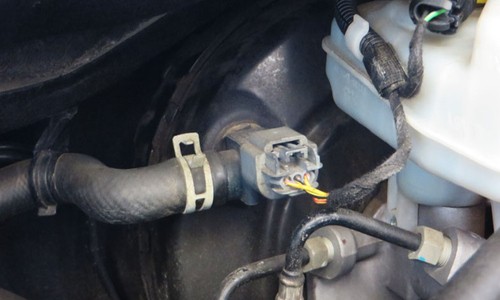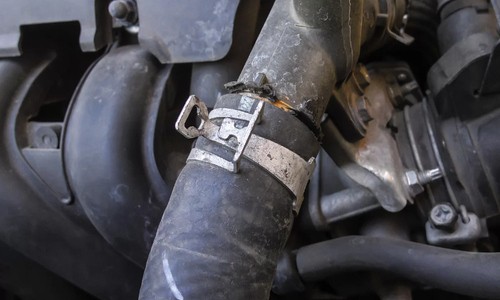C0299 Error Code: Brake Booster Malfunction
Error codes are also called diagnostic trouble codes and your car generates this code when there is a malfunction of specific parts. The C0299 error code indicates a problem somewhere in the chassis, and this specific problem is a brake booster malfunction.
Reading further, you will learn more about the brake booster system, that causes a malfunction in this part to trigger this code, the symptoms associated, and how you can troubleshoot this code effectively.
The brake booster
The brake booster is a component positioned between the brake pedal and master brake cylinder that helps drivers use brakes easily. They achieve this by applying more force on the master brake cylinder using a vacuum coupled with some air.
There are several types of brake boosters, but some of the common ones include:
- Vacuum brake booster
- Hydro-boost
- Electric brake boost
Causes of the C0299 error code
This error code is triggered by a fault in the brake booster or a component relating to it. Here are some common reasons why the C0299 error code may be triggered in your car.
Faulty brake booster vacuum sensor

This fault occurs in cars with a vacuum brake booster. The brake booster vacuum sensor is a component of the brake booster and it monitors the amount of vacuum powering the booster. When this sensor fails, it indicates that the vacuum level is low and the C0299 code is triggered. The vacuum sensor is an important component that assists in powering the brake booster.
Vacuum leak at the brake booster
The vacuum that drives your brake booster comes from your engine manifold, and it is connected to this component using a vacuum hose. A vacuum leak in the brake booster may be a result of damage to the vacuum hose. With this leak, the vacuum will be insufficient to power the brake booster to its full capacity.
Low vacuum pressure from the engine
The engine manifold is responsible for supplying vacuum to the brake booster. Low pressure prevents the delivery of the vacuum to the brake booster. This low pressure can be due to leakage in the vacuum system, dirty air filters, a blockage in the manifold, insufficient valve clearance, or leaking intake or exhaust valves. It may also be that some of the intake manifold components because damaged as a result of aging
Incorrect or disconnected vacuum hose
We already know that the vacuum hose is an important component of the brake booster as it supplies the vacuum that powers it. When this hose is installed incorrectly or it gets damaged, sufficient vacuum may not make it to the brake booster.
Failed check valve at the booster
The check valve is a component of the brake booster system that is responsible for maintaining the vacuum in the booster, releasing pressure build-up, and removing air from important vital car parts like the master cylinder and the brake lines. When the check valve is faulty, there can be a build-up of air and pressure in some car or braking components that can affect the performance of the brake booster and trigger this error code.
Symptoms of C0299 error code
When this code is triggered in your vehicle, some of the signs you may observe include:
The brake pedal is difficult to push
This is a common sign of a brake booster malfunction and it occurs as a result of vacuum leaks. Usually, you require minimal effort to use your brake pedals thanks to the power booster, however, when this leak occurs you will need some additional force to push down on the brake pedals.
Rough idle
A rough idle occurs when you experience shaking or vibrations when your car engine is on but your car is not moving. Some users may also notice a slipping sound. Rough idle is usually a symptom of a manifold problem that also affects your brake booster.
Engine stalls
When your car stalls, you experience a temporary loss of power, and in the case of a faulty brake booster, it usually occurs when braking.
The ABS warning light is on
The anti-lock braking system is responsible for providing traction to your car during skidding. Since the ABS and brake booster are part of the braking system, the sensors will trigger the yellow ABS light on your car dashboard when it detects a malfunction.
The engine light is on
When the problem stems from the engine area (the manifold), it may trigger the check engine light on your dashboard. This is usually the case for brake booster malfunction associated with vacuum leaks.
How to fix a C0299 error code
The right solution to clear the C0299 error code depends on what caused it. Depending on the cause, here are some possible solutions you can implement.
- Fix vacuum leaks
- Replace faulty brake booster vacuum sensor
- Replace the check valve
- Ensure that the vacuum hose is connected appropriately to the manifold
How to check your brake boosters for malfunctions
Tests for your brake booster are carried out to ensure that this component is functioning optimally. It may also be used to detect some malfunctions.
Here are some steps you can take to test your vacuum brake booster system.
- Turn on your car and let it idle for some minutes. This is to allow some vacuum to build up in the brake booster.
- Turn off your car engine and press on the brake pedal a few times to release any vacuum that may have built up in the power booster.
- Use a foot to press down on the brake pedal. If it is difficult to push down on the pedal and it doesn’t sink, then your brake booster is functioning properly.
- Start your car again and observe the pedal with your foot still on it. If it slowly sinks and becomes firm, then it’s confirmation that it is working well. However, if it doesn’t sink and remains down with your car started, then there is a malfunction with your brake booster.
- When out for a test drive, the brake pedals should function smoothly and make the car stop when pushed on.
How to test for vacuum leaks
Vacuum leaks are one of the common brake booster malfunctions and detecting them can be tricky. The techniques below should help you identify vacuum leaks.
- Check for a hissing sound around the brake booster and the brake pedal area
- Open your car hood and look out for cracks or any visible damage on the vacuum hose going from the manifold to the brake booster.
- Start your car and allow it to idle for some minutes. Use a spray bottle filled with soapy water to gently coat the vacuum hose with soapy water. If you observe bubbles from any area, then there is a vacuum leak.
Conclusion
The C0299 error code is a code that indicates a malfunction with your car’s brake booster. This article has revealed that there are three kinds of brake boosters and that the causes of these malfunctions relate to components of the brake booster, including the intake manifold which supplies vacuum.
We have explored some of the symptoms you may observe when this code is present in your car, how you can clear this code, and some tips on how you can test your brake booster for malfunction. As an extra, we included a brief guide on how to detect vacuum leaks easily.




